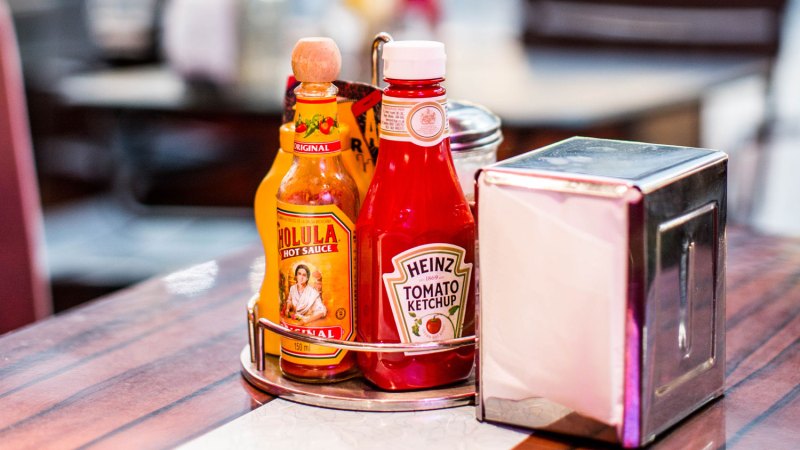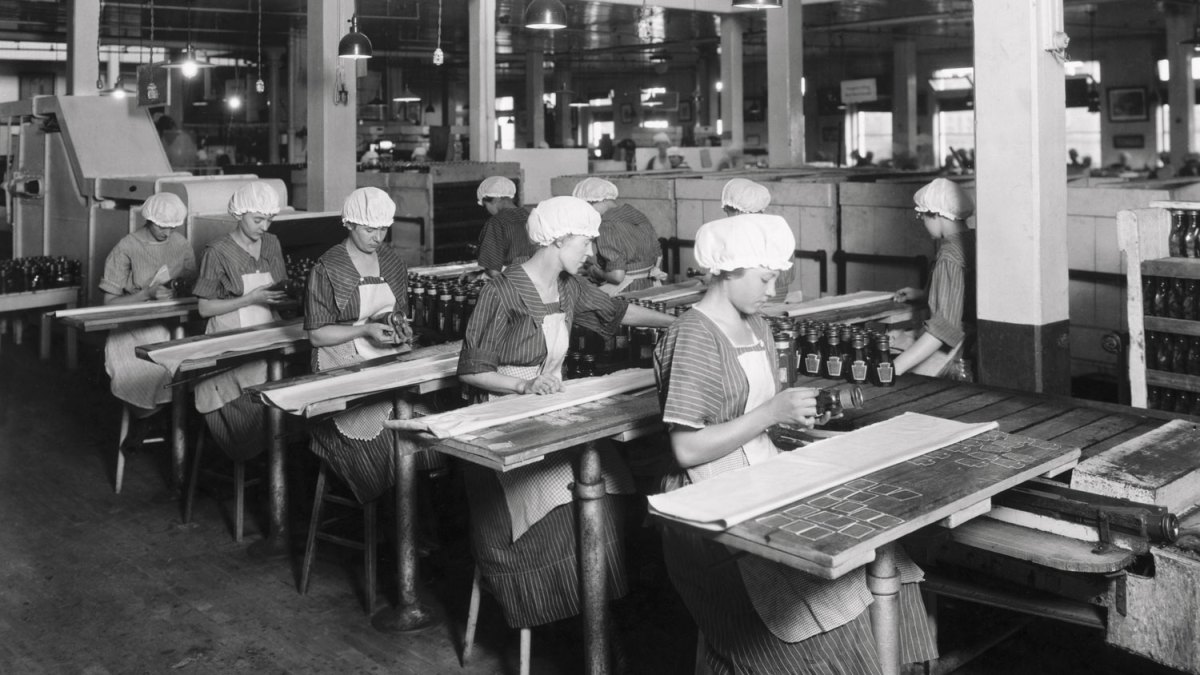
Ketchup. (Or catsup, if you’re nasty.) No other food says Americana quite like this tomato-based condiment. Without much thought to it, we’ve grown up in a culture with a capital K, introduced to ketchup at a young age as one of our first symbols of food freedom. Shake, squeeze, or slap it — enjoy as much or as little as you want. Flash forward to today and you might be embarrassed to ask for ketchup at an upscale restaurant. Alternatively, you might be offered blueberry ketchup or leather ketchup. But why? To all of this, why?
The Manual dug into the history of ketchup and — surprise, surprise — it’s super saucy. In fact, ketchup isn’t even supposed to be made with tomatoes.
In the Beginning, There was Fish Sauce
“The story of ketchup begins over 500 years ago,” says Sir Kensington’s founder Scott Norton. “Ketchup was originally a fermented fish sauce that came from Asia … the word ‘ketchup’ is a Chinese word.”
The word kôe-chiap, or kê-chiap, is from the Amoy dialect and means “the brine of pickled fish or shellfish.”
Norton tells The Manual that this salty, savory, preserved fish sauce traditionally put on tofu and rice was at the center of many ocean-born trade routes. When the English and Dutch came to Asia, they brought the concept of ketchup back to Europe, creating mushroom, walnut, and oyster ketchups. At this point, there still no tomatoes. These vintage European condiments were thinner and resembled something closer to Worcestershire sauce.

It wasn’t until the 1500s when Hernán Cortés traveled to current-day southern Mexico, presumably discovered the tomato, and introduced it to the rest of the world that the fruit could be incorporated into other cultural cuisines. Up to that point, even Italian food didn’t use any red sauce.
“Likely in America, someone had the idea of adding tomatoes to ketchup,” Norton says. “It started popping up in these prairie cookbooks and became an American phenomenon.”
Introducing His Heinzness
In the 1900s, ketchup had loads of sodium benzoate, a potentially-toxic chemical preservative that was banned by the 1906 Pure Food and Drug Act in the United States. Henry J. Heinz — who would build the largest ketchup empire in the world — had an idea to create a ketchup higher in vinegar as a response. “After that, ketchup became the signature of American food,” Norton says.
“Tomato ketchups were late to the game and Heinz cornered the market,” adds Matt Wallace, co-founder of ‘Chups, a ketchup made with fruits like mango, blueberry, plum, pineapple, and pumpkin. “The new Heinz ketchup also became thicker and sweeter.”

Why Ketchup Tastes So Good
Tomato ketchup, made without high fructose corn syrup and with real, whole non-GMO tomatoes (like Sir Kensington’s), is a symphonic balance of the five basic tastes: sweet, salty, savory, sour, and bitter. At it’s simplest, it’s a sweet food designed to complement savory food.
“It’s typically one of the first foods you might eat as a baby or toddler. It represents control as a child,” says Norton. “We are imprinted to know, like, and try ketchup, and it has a cultural association with comfort and familiarity.”

Plus, you can’t think of ketchup without visions of true Americana cuisine: the hot dog, the hamburger, and the corn dog.
A “Lesser” Condiment?
In modern America, ketchup is synonymous with tomatoes and kin to greasy, fried foods. “Throughout the fast food movement of the ’80s, ketchup has been paired with foods typically not found in higher-end dining,” says Wallace. “It’s a stigma on the gluttonous, thoughtless American stereotype, but we love ketchup. For us, the future of the condiment is providing more options and pairing ketchups with different foods.”
For instance, ‘Chups’ blueberry ketchup is great on tacos and steaks, while its spicy pineapple ketchup is used by a DC-based pizza company for pizza and empanadas.
If you aren't already going to @TimberPizzaCo for some of DC's best pies + empanadas/salads, go for the v cute 'Chups squeeze bottles. 🤗 pic.twitter.com/17gpRKhSdO
— 'CHUPS (@ChupsItUp) July 28, 2017
Norton agrees that while ketchup gets a bad rap as a “lesser” condiment in the high-end dining scene, this is a dogma we shouldn’t believe in. With an overarching mission to bring integrity and charm to overlooked sauces, Sir Kensington’s launched its brand under the guise of being British — yes, it’s an American company and, no, Norton does not have a Prince Harry accent. The goal was to change the cultural mindset around ketchup, raising its character, honoring its history, and using healthier ingredients.
The Future of Ketchup
“Today, ketchup is expanding. There is spicy ketchup, chipotle, jalapeño. It’s absolutely about more flavor platforms,” Norton says. “The increasing rise in multicultural eating and a recognition that spices bring so much life and variety to dishes will prompt this evolution of food as identity, exploration, and entertainment.”

Other food innovators are in pursuit of a similar goal, like chef Ernesto Uchimura who modernized the tomato condiment into a “leather” (imagine a fruit strip that tastes like ketchup) to reduce burger sogginess. Kickstarter company Slice of Sauce is doing a similar thing with its ketchup slices.
And no, the crazy green and purple Heinz EZ-Squirt ketchups don’t count as a modern progression.


